The ceaseless advancement of AI has left many marketers vacillating between excitement and shock. AI is being used in various areas of digital marketing, such as email marketing, landing page optimization, natural language processing, and automated decision making. Marketers can analyze vast amounts of data to gain real-time insights into customer data and behavior. Furthermore, this data is used to create highly targeted marketing campaigns. These campaigns are tailored to the individual needs and interests of potential customers, creating an optimal customer experience.
Essentially, what would otherwise take days or even hours can be automated in a fraction of the time. This disruptive technology requires further evolution of the workforce. Those who ignore these tools will quickly become obsolete in their tactics.
All great things, right? Now some caution.
Don’t deploy artificial intelligence… unless you have clearly defined the goals you want to achieve with the software before implementing it. We now see that artificial intelligence can be a powerful tool for marketers, but it has a significant learning curve (the learning curve isn’t the main problem). New systems are popping up daily that promise to automate paid media, “replace” copywriters and creatives, etc. But they’re not perfect and require their own AI marketing strategy. These tools are exciting in their own right, and time should be taken to explore them. But the last thing we should do is stack 15 AI tools on top of each other, creating more problems than they solve.
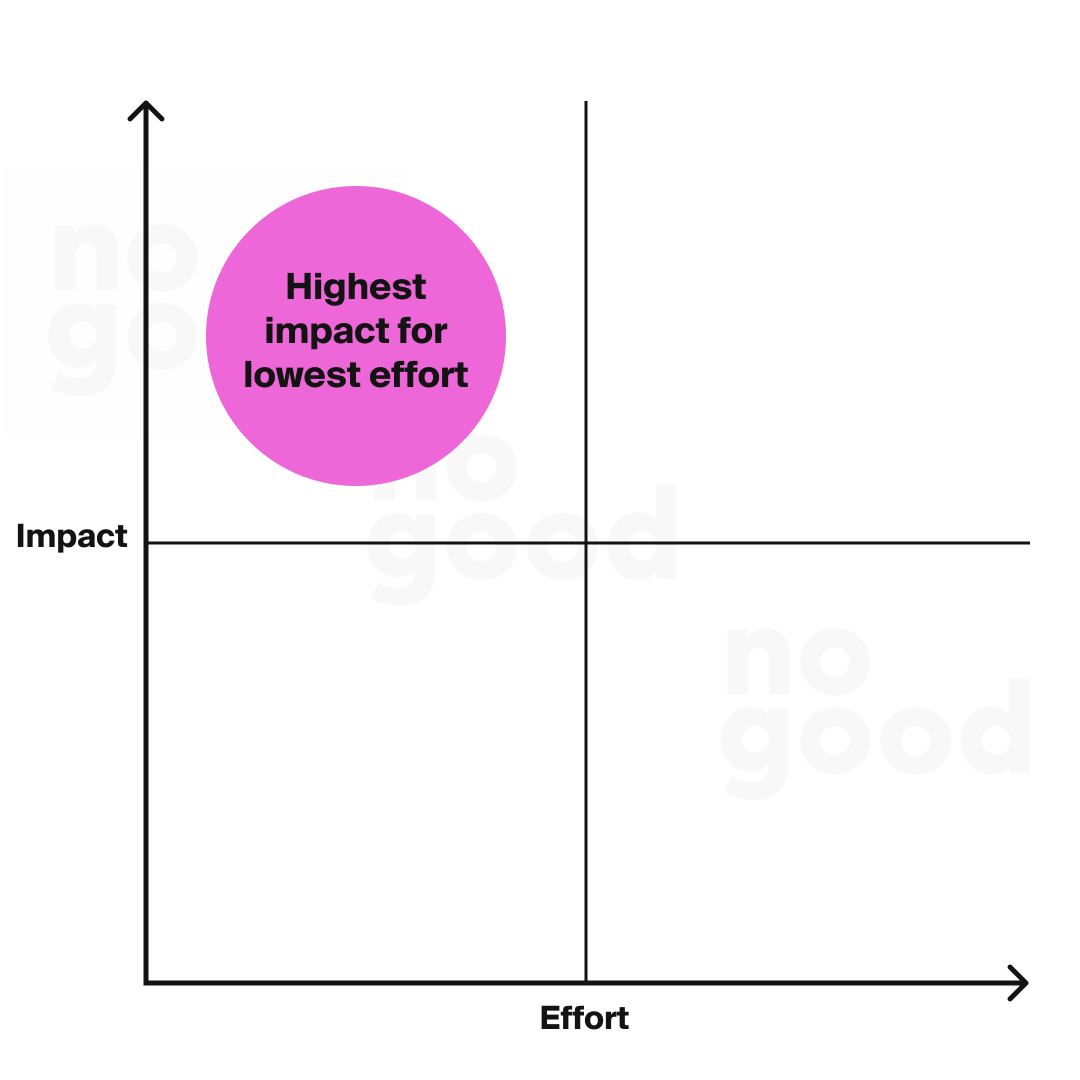
The key to the future is not to be the first to find the latest and greatest AI tool, but to be the marketer who carefully selects a system that complements their workflow. The question we ask ourselves is what tools can we use to achieve the greatest impact with the minimum effort, which seems paradoxical when talking about AI. But speed without direction is just movement.
How to Think Through AI Supplementation
Imagine that you have just acquired a new client. You could be in charge of paid media, creative, or copywriting. You’ve started reviewing the client’s channels and have a general understanding of the brand, target audience and value proposition. Now it’s time to start optimizing the account and the appropriate channels. The tools we’ll discuss below will allow you to accelerate creative research, create audience-specific copy, and develop exceptional creative in no time. However, this is by no means dogmatic. The goal is to provide an AI marketing example of how to implement a structure that will allow you to combine the most effective Ai marketing tools to maximize your output.
Ad Briefs & Story Boards: Foreplay.co
Problem: Generating a Creative Brief
Solution: Foreplay.co
You have identified the types of ad media that provide the best results for the account. If no ad media exists, it’s time to pave the creative direction. In the past, marketers have used swipe files to kick off this process. A swipe file is a collection of examples of effective marketing materials and strategies that marketers can use for inspiration and direction.
The term “swipe” refers to taking inspiration from these materials and adapting them for your marketing efforts. These are usually stored in a Google Drive, Notion Board or some other variation of a document platform. The problem with these swipe files is often the time it takes to search for the documents, save them, and place them in their respective folders. The fundamental problem with this is that it’s inefficient and usually doesn’t get updated. If you have more than a few clients, how do you actively distinguish and organize your creative inspirations?
Foreplay.co allows marketers to have a Pinterest-like board for creatives and has its own discovery feature, so you don’t necessarily have to leave the platform. Foreplay.co also works as a Chrome extension, so you can actively save creative material to your boards from native platforms. These boards allow you to effectively and efficiently store your ads in an organized library for specific clients. Currently, this tool only works with Facebook and TikTok.
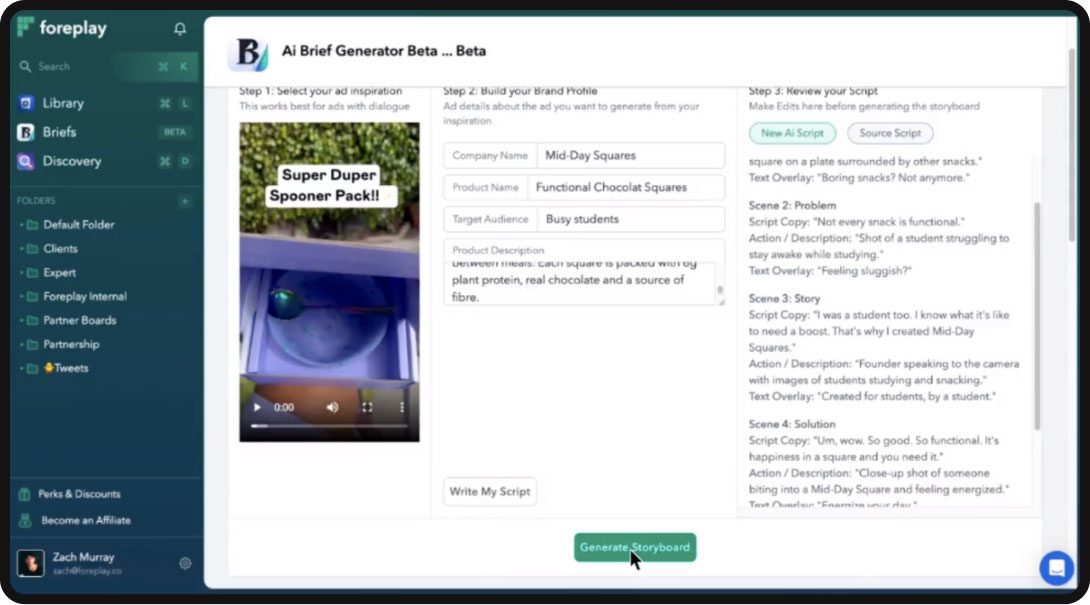
This system isn’t just a glorified swipe file. This is where Foreplay’s AI comes into play. So you’ve gathered a collection of creative inspiration on your boards. Now you take your research and background information about the company and enter it into the system.
Input
Step 1: {Saved Creative Inspiration}
Step 2: {Company Name}
Step 3: {Product Name}
Step 4: {Target Audience}
Step 5: {Product Description}
Step 6: Click – Generate a StoryBoard
Output

This system will supply:
- Scene Types
- Copy
- Actions
You now have a creative brief based on the data you have provided. The easiest thing to do would be to copy and paste this generation into the next creative brief, but we will not do that. We’ll focus on isolating a single input, which we’ll augment with ChatGPT to ensure we can generate a variety of outputs that give us a broader range of ideas for the optimal creative brief.
Target Audience: ChatGPT
Focus: Step 4 – {Target Audience}
ChatGPT is a sophisticated language model developed by OpenAI that utilizes state-of-the-art natural language processing techniques to understand and generate human-like language. Trained on an extensive dataset that includes books, articles, and websites. Essentially, you’ll be tapping into an interactive network of information that saves hours of Google searches.
We’ll pull from my colleague’s brilliant blog on Leveraging Generative AI to Supercharge Your Paid Performance.
“Suppose a brand aims to target an audience likely to be interested in sustainable cosmetics. In that case, generative AI tools could be used to analyze various data points to hone in on the exact audience who will resonate best with certain ad creative and messaging. With proper prompt engineering, generative AI tools can complete all the heavy lifting for you on your desired task…”
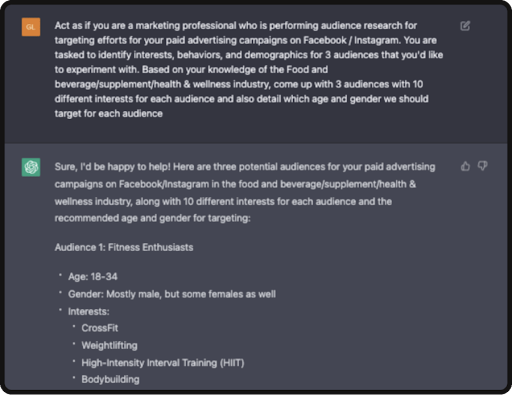
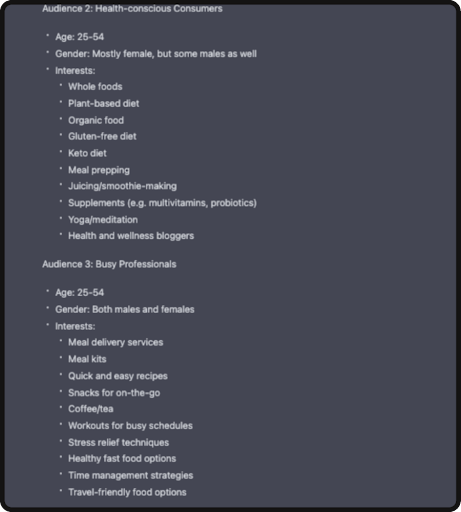
What he has done here is outsourced the targeting and audience research that is required to identify viable audiences for testing. So thinking back to the input {target audience} within Foreplay.co, when using ChatGPT, there are multiple iterations that can be used within that platform. In this way, a variety of different scene types, texts, and actions can be created. The obstacle here is how you develop your prompts, which I’d recommend you visit the blog to get the best output for the query. Prompt engineering is a fancy euphemism for how you optimally structure your queries to get the best possible output from the system.
Don’t be limited by this example. Think about how you can integrate potential audiences and product descriptions. There are endless ways you can share values, i.e. prompts, to create messages that most closely match your target audience. The only limit here is your imagination.
With that, we’ve expanded our options for creating a variety of creative briefings. Let’s take it one step further.
Copy: Instatext
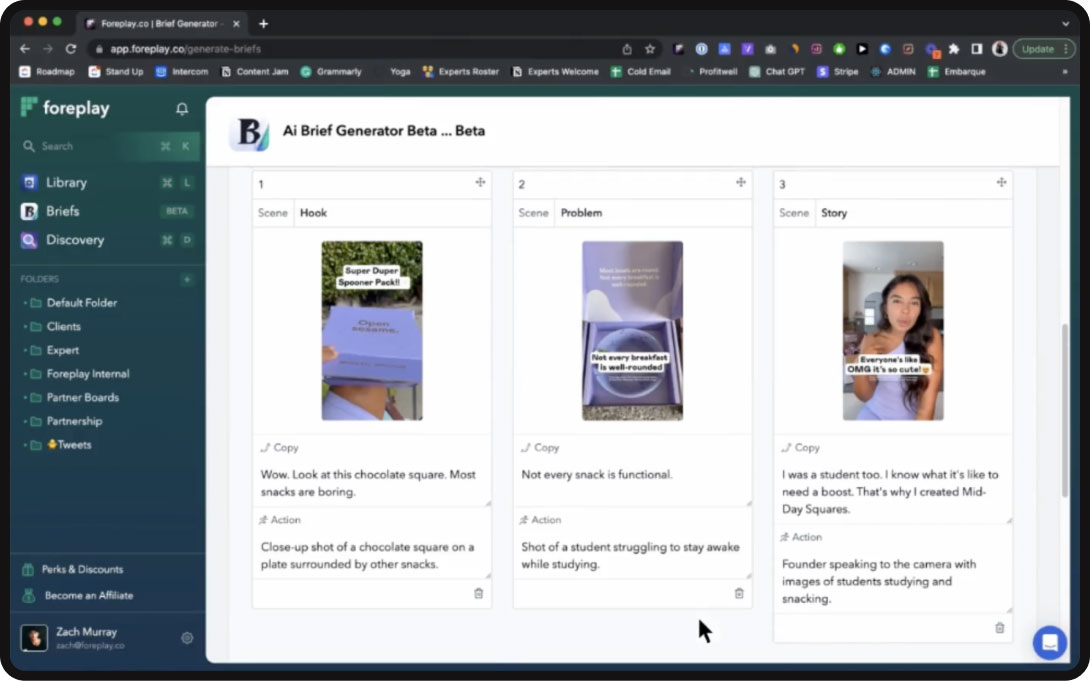
InstaText uses advanced natural language processing technology and offers a range of content marketing features, such as grammar and style checks, vocabulary expansion suggestions, and contextual analysis to help users create high-quality written content. We don’t have to limit ourselves here; we can also use Grammerly, the Hemingway app, and other ai marketing platforms.
So now you have several different variants of texts generated. These can now be checked by the AI for their writing quality. The final edit should be your eye. If you don’t like the text generated by Foreplay.co, you can revisit the ChatGPT prompt above and insert different parameters for your creative brief. If the text still doesn’t fit, here’s an idea: take your best text from your previous ads and ask ChatGPT to create multiple versions of it. Specify the target audience, demographics and other relevant information to achieve a specific result.
Creative: Midjourney
Application:
- Your creative team is slammed
- You’re the creative team
- You want to take greater creative swings
Midjourney is an AI-powered tool that generates images from prompts and works exclusively in Discord. As we mentioned with ChatGPA, creating prompts is especially important here, as you need to know exactly what you’re envisioning, or you risk spending hours generating images that don’t remotely match what you have in mind. However, if you get it right, you can generate 4 variations of high-quality images in 60 seconds. That’s what I call efficiency. Now we’re ready to get started.
Let’s say you’re creating images for a gaming company. Your target audience is men between the ages of 18 and 24. You have your brief ready with a hook and ad copy. In the decade of 2020, we’re in the age of cyberpunk. You want to create something that appeals to the gamer, something that resembles his everyday environment when he enters the multiverse of games.
Cyber Punk Gamer
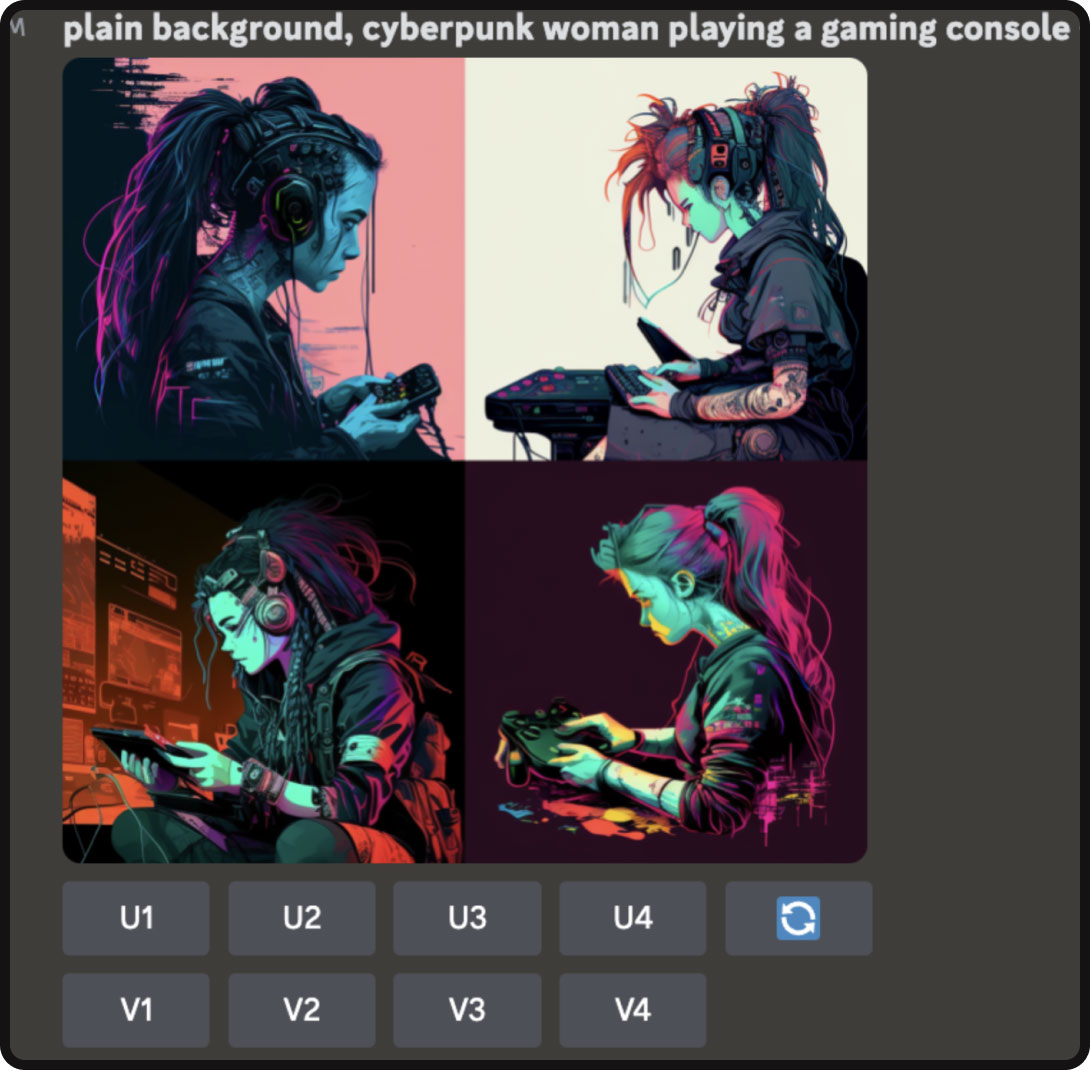
- Use [U] to select the image you want to upscale to save.
- With [V] you can create 4 more versions of the image in question, when the image is almost ready and only needs to be reworked.
- The blue button is a complete revision of the prompt.
- 1-4 prompts flow from left to right.
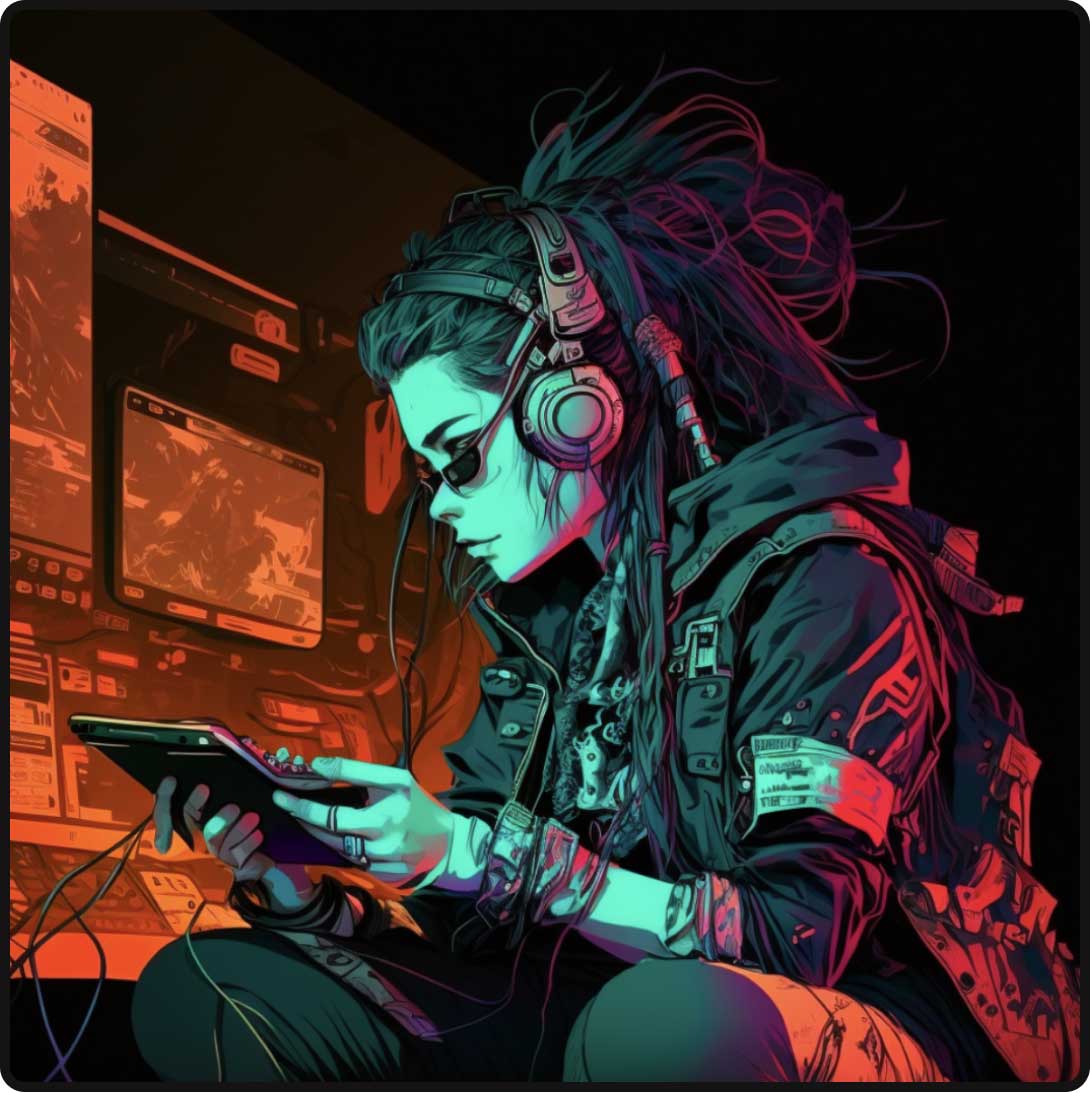
What we can do from here is implement some additional tools to turn this into an ad-worthy creative.
First, we use Remove.bg, which uses AI technology to detect the foreground object in an image and remove the background, leaving only the object or person in the image. The resulting image can then be downloaded in PNG format with a transparent background, making it easy to use in various designs and graphics.
Next, we’ll use a program that all of us marketers have probably used at some point, Canva.
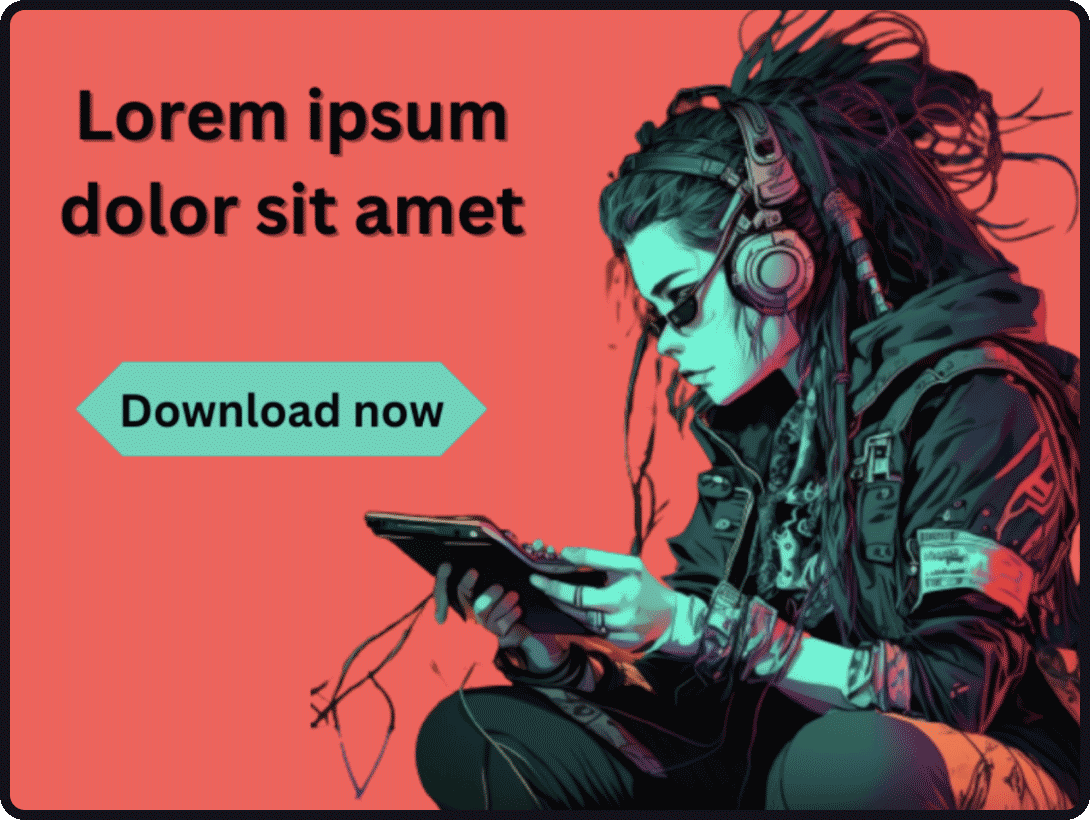
Let’s Review
We set a clear goal [Creative Brief] and with the careful use of Foreplay.co, ChatGPT, Instatext and Midjourney, we have fully streamlined the process of creating a Creative Brief. You now have a list of tools at your fingertips that make the way you approach marketing easier, without creating more work for yourself. Look at each tool, take a step back, and consider how you can add to it in a process that benefits your workflow. The caveat is that you’ll need to tweak your prompts to get optimal results, but you’ll learn that with time and consistency. Initially, you probably won’t get the results you want, but with careful documentation of your process, you’ll find that you’re able to consistently integrate AI tools into your arsenal that allow you to efficiently achieve optimal results.






